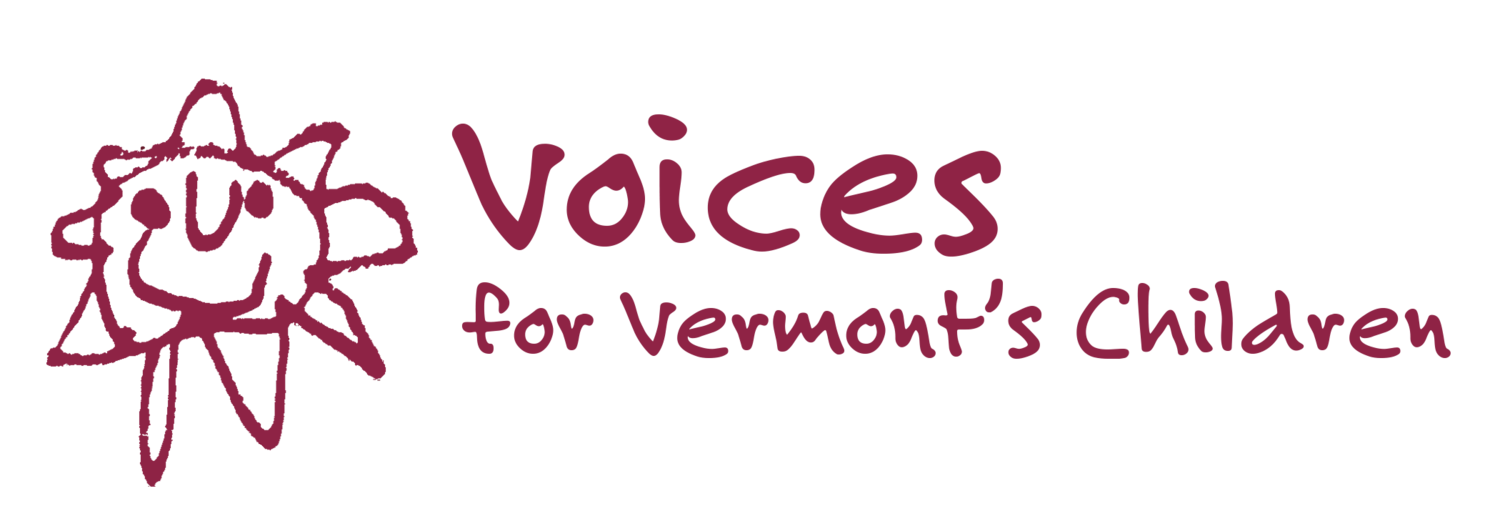Voices Position on Coronavirus Relief Funding: Putting Children's Needs First
Vermont’s initial response to the coronavirus crisis was straightforward and humane. Decisive action was taken to meet people’s basic needs, even before a solid plan for how to finance these supports was clear. Why? Because policymakers understood that failing to do so would worsen and prolong the damage of the public health crisis. People without homes couldn’t self-isolate safely. People whose low-wage employment was interrupted would not be able to feed themselves and their families. So we marshalled resources quickly and relatively effectively to house, feed, and get needed resources into the hands of people in our state.
This promising start makes the recent abrupt shift from a people-centered response to a reopening plan that prioritizes wage labor productivity over well-being all the more disheartening. Efforts to return to pre-pandemic “normal” fail to acknowledge that in that normal, nearly one in three Vermont kids (34,000) lived in low-income households, earning far less than what’s required to cover basic needs. Of these, 13,000 children and youth lived below the federal poverty line, with 7,000 childhoods taking place against the damaging backdrop of extreme poverty. The truth is, Vermont has been in a public health crisis for years - a crisis caused by stagnant wages, the erosion of the social safety net, and a steady decline in public investment in children. Now that we’ve proven we can act boldly in response to a perceived threat, we can’t go back to business as usual. It’s time to shore up the foundation of our state for today’s children and generations to come.
A recent report from the World Health Organization and Unicef asserts that “Since threats to child health and wellbeing originate in all sectors, a deliberately multisectoral approach is needed to ensure children and adolescents survive and thrive from the ages of 0–18 years, today and in the future.” Vermont has an incredible opportunity before us, to learn from the challenges created by the covid-19 pandemic and redesign our institutions and communities to prioritize human flourishing. It’s critical that we do so through a framework of equity and sustainability, so that those who have been most compromised by the institutional and systemic inequities of the past are made whole. To do this well, we must assess the ways that our support systems interact, find the gaps that create inequitable outcomes for kids and families, and correct these design flaws.
As businesses reopen, the need for increased investment in a sustainable early care and learning system is clear. Through expanded subsidies and other permanent solutions, we must make sure parents have access to safe, developmentally appropriate care and education for their children, and that caregivers are compensated fairly. We must also expand our thinking about providing economic security for families. The current narrative is that these families don’t have a choice and must return to work, while families with more resources are trusted to make the right decision for their family’s well being. What if our policy conversations centered on providing more equitable choices to all families, rather than accepting and perpetuating inequities that pile all the risk of reopening on people already on the margins? We are capable of more, and our kids deserve better.
Recommendations:
Early Care and Learning
Now is the time to take stock of – and correct – the shortcomings that arise out of dependence on a market-based system. Child care is no less a public good than PK-12 education, and should be structured and funded accordingly. Relief funds should be used to accelerate the shift to a universal, publically funded early care and education system.
Relative caregivers are a critical resource during the pandemic, and beyond. Particularly in communities of color and people with inadequate incomes to meet basic needs, intergenerational caregiving is an asset that provides culturally appropriate, affordable and accessible care. Caregiving is an essential service that is the foundation of so many other essential functions, including health care, food service, and public safety. Federal Child Care and Development Block Grants (CCDBG) and CARES funding should be used to pay relative caregivers, both to recognize their importance to the family and the economy—and to provide much-needed funds to families during this crisis while access to regulated care is unattainable for many.
In order to meet the social distancing guidance from the Department of Health and Child Development Division, many programs will be operating at reduced capacity. The state should issue guidance (and financial incentives) to providers who participate in the child care financial assistance program on how to allocate their limited slots equitably.
Voices supports the proposed policy changes and investments put forth in Let’s Grow Kids’ CARES ACT position statement.
Economic Security & Basic Needs
Families need a constellation of services and supports in order to thrive. We are concerned with the apparent policy preference for downstream interventions when families are struggling rather than addressing the underlying causes of hardship. State resources and coronavirus relief funds (to the extent allowable) should be used to:
Increase the base grant for TANF/Reach Up so that it provides enough support to meet families’ basic needs;
Implement a fully refundable child tax credit, targeted to families with the lowest incomes.
Expand rental subsidies, rehabilitate rental units, and provide support services to meet the needs of unhoused families in the state.
Voices countersigns proposals advanced by our partners at Hunger Free Vermont to bolster nutrition resources for children and families.
Data Systems
Vermont’s ability to respond effectively, equitably, and rapidly to the needs of children and families in the state has long been hindered by our decrepit data systems. Recovery funds should be directed to modernize and integrate the state’s data systems.
Our policy approaches and public investments as a state must match the scale of the systemic failures made glaringly apparent by the covid-19 crisis. Putting children’s needs at the center of the response assures that the solutions we advance work today and for the future.

